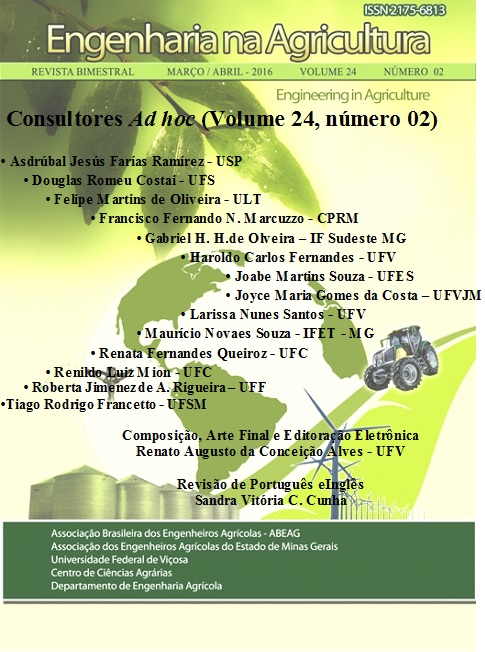CORRELATION BETWEEN THE SUGARCANE PRODUCTIVITY WITH THE pH OF A RED ULTISOL DYSTROPHIC OF NORTHWEST OF SÃO PAULO STATE, BRAZIL
DOI:
https://doi.org/10.13083/reveng.v24i2.592Keywords:
agricultura de precisão, atributos químicos do solo, manejo do soloAbstract
Agricultural productivity depends primarily on the productive capacity of soils. Thus, practices of chemical suitability of the soil aim to changes in their characteristics to provide better conditions for the development of cultures. The present study aimed to evaluate the linear and spatial correlations between the attributes of plant productivity with soil pH. The aim of this study was to evaluate the linear and spatial correlations between the attributes of the plant with soil. In Farm Valencia-I, Suzanápolis-SP, Brazil, a geostatistical grid with 118 sampling points has been installed in an area of 10.5 ha. The attributes of sugarcane analyzed was: productivity of tons of stems per hectare (TSH), plant population (PP) and total recoverable sugars (TRS); and as soil chemical properties: pH (pH) and Delta pH (DpH) at different depths (0-0.20; 0.20-0.40; 0.80-1.00 m). The results indicate that the linear correlation between the attributes of the soil with the plant is significant. The best correlation is between TRS with the pH in the depth of 0.80-1.00 m. Spatially, there is a significant interaction between productivity with the pH of the soil at a depth of 0.20-0.40 m. The DpH depth of 0.80-1.00 m also correlates with the TRS, which allows inferring that best chemical quality in the deepest layer provides better technological quality of industrializable product. The soil study in the deeper layers (0.20-0.40 m and 0.80-1.00 m) indicates interaction (linear and spatial) both productivity and with the technological attribute of sugarcane, presenting as target satisfactory of soil chemical suitability.Downloads
Downloads
Published
How to Cite
Issue
Section
License
Authors who publish with this journal agree to the following terms:
The author(s) authorize(s) the publication of the text in the journal;
The author(s) ensure(s) that the contribution is original and unpublished and that it is not in the process of evaluation by another journal;
The journal is not responsible for the views, ideas and concepts presented in articles, and these are the sole responsibility of the author(s);
The publishers reserve the right to make textual adjustments and adapt texts to meet with publication standards.
From submission, the author is fully conceding the paper's patrimonial rights to the publication, but retaining the owner of its moral rights (authorship and paper's identification) according to Creative Commons Attribution-Noncommercial.








 Licensed by
Licensed by 